Calorie Counting for Weight Management: A Practical Guide
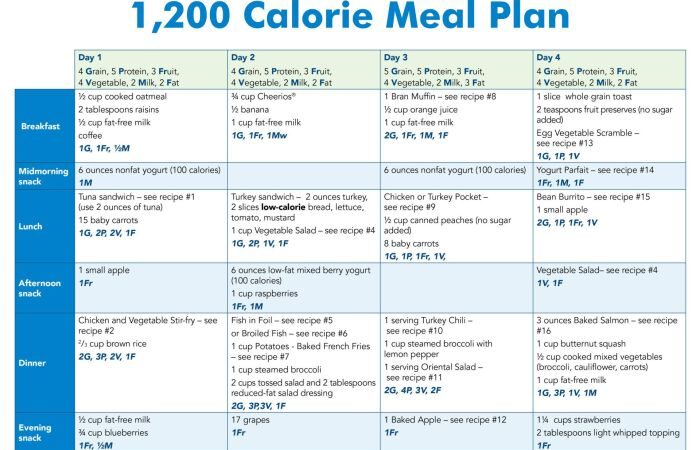
Calorie counting for weight management is a popular strategy that involves tracking your daily calorie intake to create a calorie deficit or surplus for weight loss or gain. It’s a simple concept: when you consume fewer calories than you burn, you lose weight, and vice versa.
While the idea is straightforward, the execution can be more challenging. Understanding how to effectively track calories, determine your individual needs, and make sustainable lifestyle changes is key to achieving your weight management goals.
This guide explores the fundamental principles of calorie counting, providing practical methods for tracking your intake, estimating your daily needs, and incorporating calorie awareness into your daily routine. We’ll also delve into the importance of balancing calorie intake with nutrient needs, the role of physical activity, and strategies for maintaining a sustainable approach to calorie counting.
Understanding Calorie Counting
Calorie counting is a fundamental principle in weight management, helping individuals understand the relationship between their food intake and energy expenditure. It involves tracking the number of calories consumed through food and beverages and comparing it to the number of calories burned through physical activity and daily living.
The Relationship Between Calorie Intake, Expenditure, and Weight Change
Calorie counting is based on the fundamental principle of energy balance.
The human body requires energy to function, and this energy is measured in calories.
When calorie intake exceeds calorie expenditure, the body stores the excess energy as fat, leading to weight gain. Conversely, when calorie expenditure surpasses calorie intake, the body utilizes stored fat for energy, resulting in weight loss.
Calorie Counting for Weight Loss
To achieve weight loss, individuals need to create a calorie deficit, meaning they consume fewer calories than they burn.
- For example, a person aiming to lose 1 pound of fat per week needs to create a calorie deficit of approximately 3,500 calories. This can be achieved by reducing calorie intake, increasing physical activity, or a combination of both.
Calorie Counting for Weight Gain
Conversely, to gain weight, individuals need to create a calorie surplus, meaning they consume more calories than they burn.
- For example, a person aiming to gain 1 pound of muscle per week needs to create a calorie surplus of approximately 3,500 calories. This can be achieved by increasing calorie intake, reducing physical activity, or a combination of both.
Calorie Tracking Methods
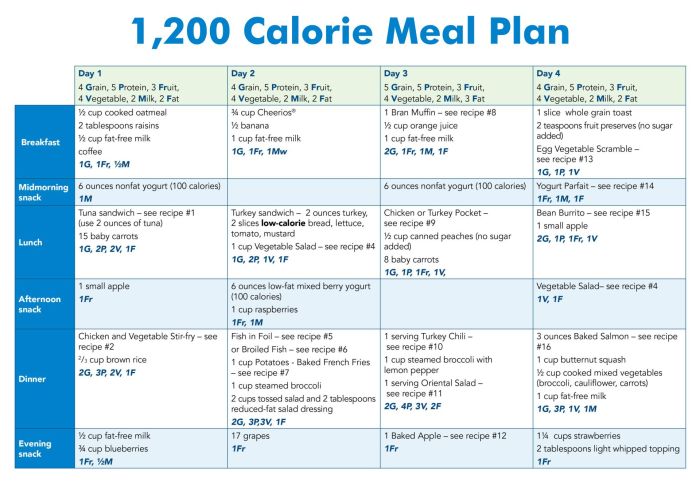
Tracking your calorie intake is an essential aspect of weight management. By monitoring the calories you consume, you can better understand your dietary habits and make informed decisions about your food choices. There are various methods available to track your calorie intake, each with its advantages and disadvantages.
Food Diaries
Maintaining a food diary is a traditional method of calorie tracking. This involves recording everything you eat and drink throughout the day, including the portion sizes. You can use a notebook, a spreadsheet, or a dedicated app to record this information.
- Pros: Food diaries offer a detailed and personalized record of your dietary habits. They provide valuable insights into your eating patterns and help you identify areas for improvement.
- Cons: Maintaining a food diary can be time-consuming and tedious. It requires constant attention and effort to accurately record every item consumed.
Calorie-Counting Apps
Calorie-counting apps have become increasingly popular in recent years. These apps allow you to scan barcodes or search for food items to quickly determine their calorie content. They often provide additional features, such as meal planning, recipe suggestions, and progress tracking.
- Pros: Calorie-counting apps are convenient and user-friendly. They offer a quick and easy way to track your calorie intake, often with built-in databases of food items and nutritional information.
- Cons: Some apps may not be accurate, and their databases may not be comprehensive. They may also rely on self-reported data, which can be prone to errors or inaccuracies.
Online Tools
Several online tools are available to help you track your calorie intake. These tools often function similarly to calorie-counting apps, allowing you to search for food items, record your meals, and track your progress.
- Pros: Online tools are accessible from any device with an internet connection. They may offer additional features, such as community support and personalized recommendations.
- Cons: Online tools may require registration and may collect personal data. They may also be less user-friendly than dedicated apps.
Sample Calorie Tracking Schedule
Here’s an example of a daily calorie tracking schedule:
| Time | Meal/Snack | Food Item | Calories |
|---|---|---|---|
| 7:00 AM | Breakfast | Oatmeal with berries and nuts | 300 |
| 10:00 AM | Snack | Apple with peanut butter | 200 |
| 1:00 PM | Lunch | Grilled chicken salad with mixed greens and vegetables | 400 |
| 4:00 PM | Snack | Greek yogurt with fruit | 150 |
| 7:00 PM | Dinner | Salmon with roasted vegetables and quinoa | 500 |
| 9:00 PM | Snack (optional) | A small handful of almonds | 100 |
Note:This is just a sample schedule and calorie intake may vary depending on individual needs and activity levels.
Calorie Needs and Estimation: Calorie Counting For Weight Management
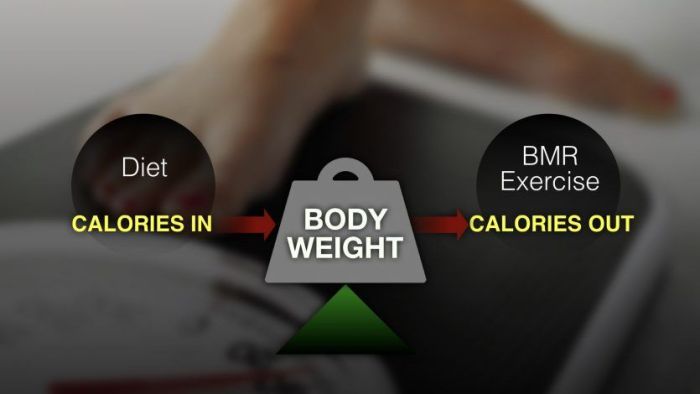
Determining your daily calorie needs is crucial for effective weight management. Understanding the factors that influence these needs and employing accurate estimation methods can help you create a personalized calorie plan that aligns with your goals.
Factors Influencing Calorie Needs, Calorie counting for weight management
Your daily calorie requirements are influenced by a combination of factors that reflect your unique physiological and lifestyle characteristics. These factors include:
- Age: As you age, your metabolism naturally slows down, requiring fewer calories for maintenance. This decrease in metabolic rate is primarily attributed to a reduction in muscle mass and an increase in body fat.
- Gender: Men generally have higher calorie needs than women due to their typically larger muscle mass and higher metabolic rate.
- Activity Level: The amount of physical activity you engage in significantly impacts your calorie needs. Individuals with more active lifestyles require more calories to fuel their workouts and maintain energy levels.
- Body Composition: The ratio of muscle mass to body fat influences calorie needs. Muscle tissue burns more calories at rest than fat tissue, so individuals with a higher proportion of muscle mass require more calories for maintenance.
Estimating Daily Calorie Requirements
There are several methods for estimating your daily calorie needs, including online calculators and formulas.
Online Calorie Calculators
Online calorie calculators are widely available and often provide a convenient way to estimate your calorie needs. These calculators typically ask for information about your age, gender, height, weight, and activity level. By inputting these details, the calculator estimates your basal metabolic rate (BMR) and adjusts it based on your activity level.
Formulas
Various formulas, such as the Mifflin-St Jeor equation and the Harris-Benedict equation, can be used to estimate your daily calorie needs. These formulas take into account factors such as age, gender, height, and weight.
Mifflin-St Jeor Equation:For men: (10 x weight in kg) + (6.25 x height in cm)
(5 x age in years) + 5
For women: (10 x weight in kg) + (6.25 x height in cm)
- (5 x age in years)
- 161
Example:
A 30-year-old woman who is 5’4″ (163 cm) tall and weighs 130 lbs (59 kg) with a moderately active lifestyle can estimate her calorie needs using the Mifflin-St Jeor equation:(10 x 59 kg) + (6.25 x 163 cm)
- (5 x 30 years)
- 161 = 1400 calories per day
Calorie Needs for Different Goals
These needs can vary depending on your individual goals and circumstances.
- Weight Loss: To lose weight, you need to consume fewer calories than you burn. A typical recommendation for weight loss is a calorie deficit of 500-1000 calories per day.
- Weight Gain: To gain weight, you need to consume more calories than you burn. A typical recommendation for weight gain is a calorie surplus of 250-500 calories per day.
- Maintaining Weight: To maintain your current weight, you need to consume roughly the same number of calories as you burn.
Calorie Counting in Practice
Now that you understand the basics of calorie counting, let’s delve into how to apply this knowledge in your daily life. This section will explore practical strategies and examples to help you successfully incorporate calorie counting into your weight management journey.
Calorie Content of Common Food Items
A helpful starting point is to understand the calorie content of common foods. This table provides an overview of calorie values for various food items, serving as a reference point for your calorie-counting efforts.
| Food Item | Serving Size | Calories |
|---|---|---|
| Apple | 1 medium | 95 |
| Banana | 1 medium | 105 |
| Chicken Breast (grilled) | 4 oz | 165 |
| Brown Rice | 1/2 cup cooked | 110 |
| Yogurt (plain, low-fat) | 1 cup | 150 |
Tips and Strategies for Calorie Counting
Calorie counting can be effectively integrated into your daily routine with these helpful tips and strategies.
- Track Your Intake: Utilize a food diary, mobile app, or online calorie tracker to meticulously record everything you consume. This detailed record will help you stay aware of your calorie intake and identify areas for potential adjustments.
- Read Food Labels: Pay close attention to food labels, especially the calorie content and serving size information. This will allow you to make informed choices and manage your calorie intake accurately.
- Plan Your Meals: Prepare a meal plan in advance, outlining your meals and snacks for the day or week. This proactive approach will help you make healthier food choices and avoid impulsive decisions that may derail your calorie goals.
- Cook More Meals at Home: Preparing meals at home allows you to control the ingredients and portion sizes, ensuring that you are consuming a calorie-conscious diet.
- Be Mindful of Portions: Use smaller plates and bowls to control portion sizes and avoid overeating. Visual cues can help you manage your intake effectively.
- Stay Hydrated: Drinking plenty of water throughout the day can help you feel full and reduce the likelihood of overeating. Water is a calorie-free beverage that promotes satiety.
- Be Patient and Consistent: Calorie counting is a long-term commitment, and results may not be immediate. Consistency and patience are key to achieving sustainable weight management.
Real-World Examples of Calorie Counting Success
Calorie counting has proven effective for many individuals seeking to manage their weight. Here are some real-world examples that illustrate its success:
“After struggling with weight gain for years, I decided to try calorie counting. By tracking my intake and making small adjustments, I lost 20 pounds in six months. I now have a healthier relationship with food and feel much more confident.”
Sarah, 32, Chicago
“I used a calorie tracking app to help me manage my weight after having my baby. It was easy to use and helped me understand how many calories I was consuming. I lost 15 pounds in three months and feel much healthier now.”
Emily, 28, New York
Calorie Counting and Diet Quality
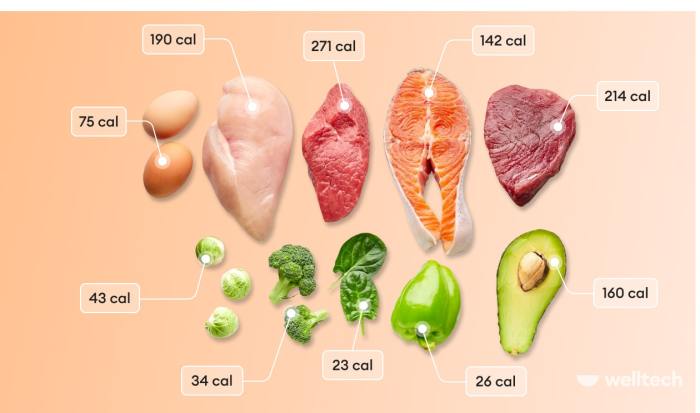
While calorie counting can be an effective tool for weight management, it’s crucial to remember that it’s only one piece of the puzzle. Simply focusing on calories without considering the nutritional quality of your food can lead to deficiencies and other health issues.
A balanced diet is essential for overall well-being, and calorie counting should be used to support a healthy and varied eating pattern.
Nutrient-Dense Foods for Calorie-Controlled Diets
Nutrient-dense foods are packed with essential vitamins, minerals, and fiber, providing numerous health benefits. These foods can be incorporated into a calorie-controlled diet, ensuring you get the nutrients you need without exceeding your daily calorie goal.
- Fruits and Vegetables: These are naturally low in calories and high in fiber, vitamins, and minerals. They can be enjoyed in various forms, including fresh, frozen, canned, or dried.
- Lean Protein Sources: Opt for lean protein sources like chicken, fish, beans, lentils, and tofu. These are essential for building and repairing tissues, and they can help keep you feeling full and satisfied.
- Whole Grains: Choose whole grains like brown rice, quinoa, and whole-wheat bread over refined grains. They provide more fiber and nutrients, which can help regulate blood sugar levels and promote digestive health.
- Healthy Fats: Include healthy fats in your diet from sources like avocados, nuts, seeds, and olive oil. These fats are essential for hormone production, brain function, and overall health.
Using Calorie Counting to Support a Healthy Diet
Calorie counting can be a valuable tool for understanding your dietary habits and making informed choices about the foods you consume. It can help you:
- Track your intake: Calorie counting allows you to monitor your daily calorie consumption and ensure you’re staying within your target range.
- Identify areas for improvement: By tracking your calorie intake, you can identify areas where you might be overconsuming calories or missing out on essential nutrients.
- Make informed food choices: Knowing the calorie content of different foods can help you make more informed choices and prioritize nutrient-dense options.
- Develop sustainable habits: Calorie counting can help you develop healthier eating habits that you can maintain over the long term.
Calorie Counting and Physical Activity
Calorie counting is a valuable tool for weight management, but it’s only one piece of the puzzle. Physical activity plays a crucial role in calorie expenditure and overall health, and incorporating it into your calorie-counting plan can significantly enhance your results.
The Role of Physical Activity in Calorie Expenditure and Weight Management
Physical activity is essential for weight management because it burns calories. When you engage in exercise, your body uses energy to fuel muscle contractions, leading to increased calorie expenditure. This can help create a calorie deficit, which is necessary for weight loss.
The amount of calories burned during exercise depends on several factors, including the intensity, duration, and type of activity, as well as your individual body weight and metabolism.
Furthermore, physical activity offers numerous health benefits beyond calorie burning, such as improving cardiovascular health, strengthening bones and muscles, reducing the risk of chronic diseases, and boosting mood and energy levels.
Examples of Exercises that Can Be Incorporated into a Calorie-Counting Plan
Here are some examples of exercises that can be incorporated into a calorie-counting plan:
- Cardiovascular Exercise: Activities that elevate your heart rate and breathing, such as brisk walking, running, swimming, cycling, and dancing. These exercises effectively burn calories and improve cardiovascular health.
- Strength Training: Activities that involve resistance, such as lifting weights, using resistance bands, or doing bodyweight exercises. Strength training builds muscle mass, which increases your resting metabolic rate, helping you burn more calories even when at rest.
- High-Intensity Interval Training (HIIT): A form of exercise that alternates between short bursts of intense activity and periods of rest or low-intensity activity. HIIT is highly effective for calorie burning and improving cardiovascular fitness.
- Yoga and Pilates: These activities combine strength training, flexibility, and mindfulness. They can help improve muscle tone, balance, and flexibility, while also promoting stress reduction and relaxation.
The Importance of Finding Enjoyable Activities
Finding enjoyable activities is crucial for long-term adherence to a calorie-controlled lifestyle. If you dislike your exercise routine, you’re less likely to stick with it. Explore different activities and find ones that you genuinely enjoy.
- Consider your interests and preferences: Do you prefer group fitness classes, outdoor activities, or solo workouts?
- Experiment with different activities: Try various types of exercise to discover what you find motivating and enjoyable.
- Find a workout buddy: Having a friend to exercise with can provide support, accountability, and motivation.
Calorie Counting and Sustainability
While calorie counting can be an effective tool for weight management, it’s crucial to approach it in a sustainable way to avoid burnout and maintain long-term success. This section explores potential challenges, strategies for long-term adherence, and the importance of a balanced lifestyle for sustainable weight management.
Challenges and Pitfalls of Calorie Counting
Calorie counting, while effective for weight management, can present challenges and pitfalls that can hinder its sustainability.
- Time Commitment: Accurately tracking calories requires time and effort. This can be particularly challenging for individuals with busy schedules.
- Mental Fatigue: Constantly focusing on calorie intake can lead to mental fatigue and obsessive thoughts about food.
- Social Challenges: Social events and dining out can make it difficult to stick to calorie goals.
- Nutritional Deficiencies: Focusing solely on calorie restriction can lead to nutritional deficiencies if individuals don’t prioritize a balanced diet.
- Unrealistic Expectations: Setting unrealistic calorie goals can lead to frustration and feelings of failure.
Strategies for Sustainable Calorie Counting
- Set Realistic Goals: Aim for gradual, sustainable weight loss rather than drastic, quick fixes. A healthy rate of weight loss is generally considered to be 1-2 pounds per week.
- Focus on Healthy Habits: Instead of solely focusing on calories, prioritize building healthy eating habits. This includes consuming whole, unprocessed foods, drinking plenty of water, and eating regular meals.
- Find a Calorie Tracking Method that Works for You: Explore different calorie tracking methods, such as food journals, mobile apps, or online tools, to find one that suits your needs and preferences.
- Be Flexible: Allow yourself occasional indulgences and don’t be too hard on yourself if you slip up. Focus on getting back on track rather than dwelling on mistakes.
- Seek Support: Talk to a registered dietitian or healthcare professional for personalized guidance and support. Consider joining a weight loss support group or connecting with others who are also on a weight management journey.
Importance of Healthy Eating Habits and a Balanced Lifestyle
While calorie counting can be a useful tool for weight management, it’s crucial to remember that it’s not a long-term solution. Sustainable weight management requires a holistic approach that includes developing healthy eating habits and a balanced lifestyle.
“Weight management is not just about counting calories, it’s about building healthy habits that you can sustain over time.”
- Prioritize Whole Foods: Focus on consuming whole, unprocessed foods such as fruits, vegetables, whole grains, lean proteins, and healthy fats. These foods are nutrient-dense and provide sustained energy, helping to prevent cravings and overeating.
- Mindful Eating: Pay attention to your hunger and fullness cues. Eat slowly and savor your meals, focusing on the taste and texture of your food.
- Regular Physical Activity: Engage in regular physical activity to burn calories, improve your metabolism, and boost your overall health. Aim for at least 150 minutes of moderate-intensity aerobic activity or 75 minutes of vigorous-intensity aerobic activity per week.
- Stress Management: Stress can lead to overeating and weight gain. Find healthy ways to manage stress, such as exercise, meditation, or spending time in nature.
- Adequate Sleep: Getting enough sleep is crucial for weight management. When you’re sleep-deprived, your body produces more of the hunger hormone ghrelin and less of the satiety hormone leptin, which can lead to increased appetite and cravings. Aim for 7-9 hours of quality sleep per night.
Concluding Remarks
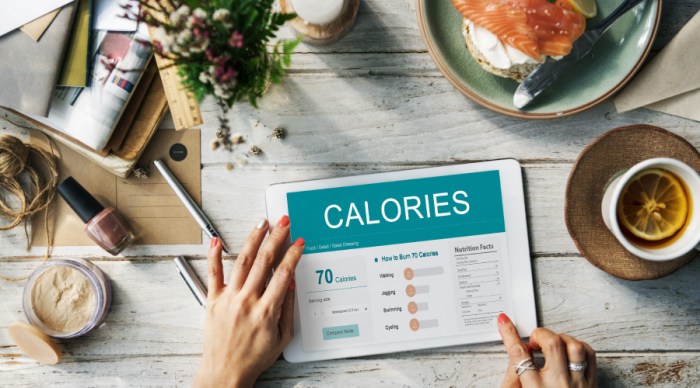
Calorie counting can be a powerful tool for weight management, but it’s not a magic bullet. It’s essential to approach it with a balanced perspective, focusing on sustainable lifestyle changes rather than short-term fixes. By understanding your individual calorie needs, tracking your intake, and incorporating healthy eating habits and regular physical activity, you can achieve your weight management goals and live a healthier life.
Remember, consistency is key. Start small, make gradual changes, and celebrate your progress along the way.
Comments are closed.